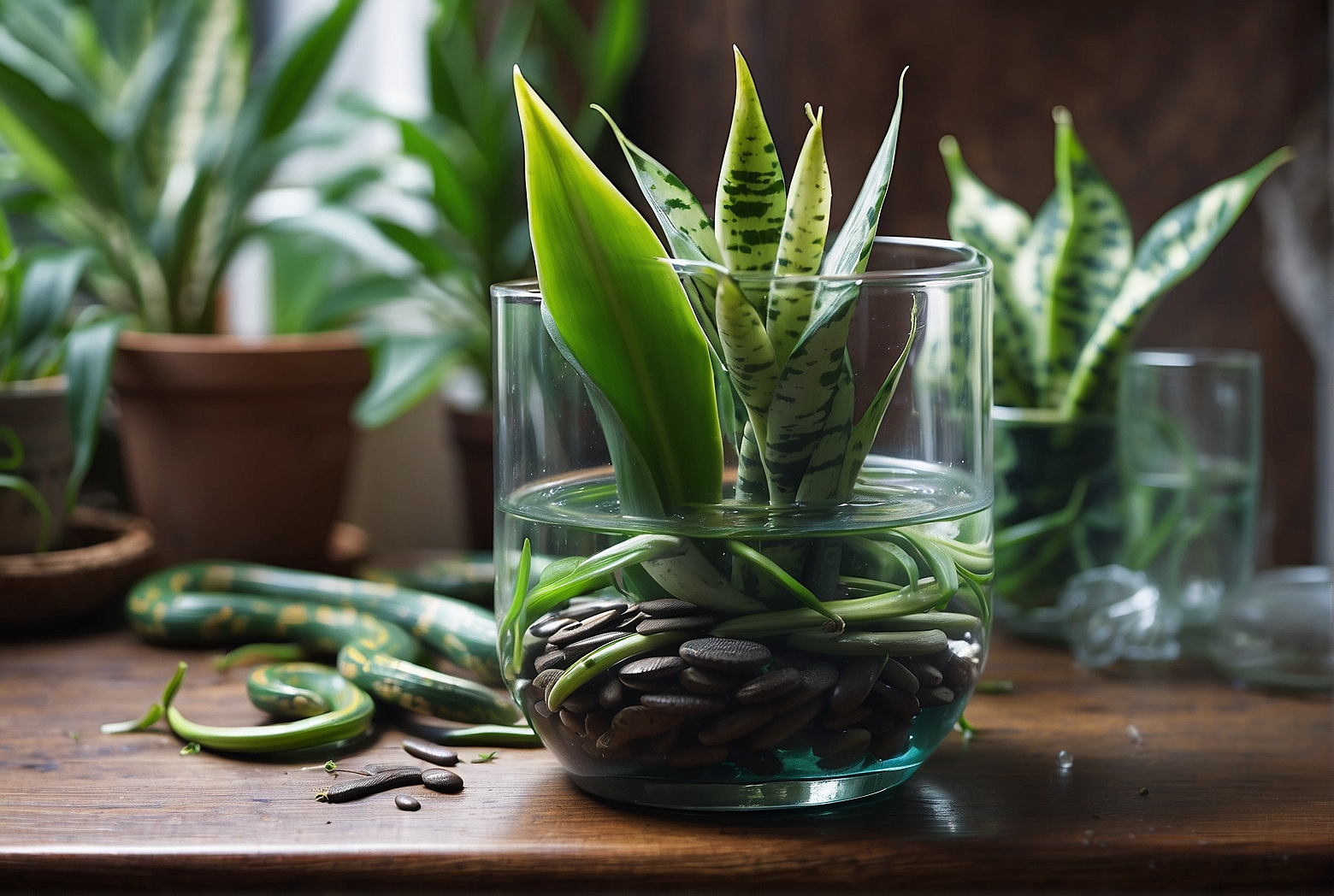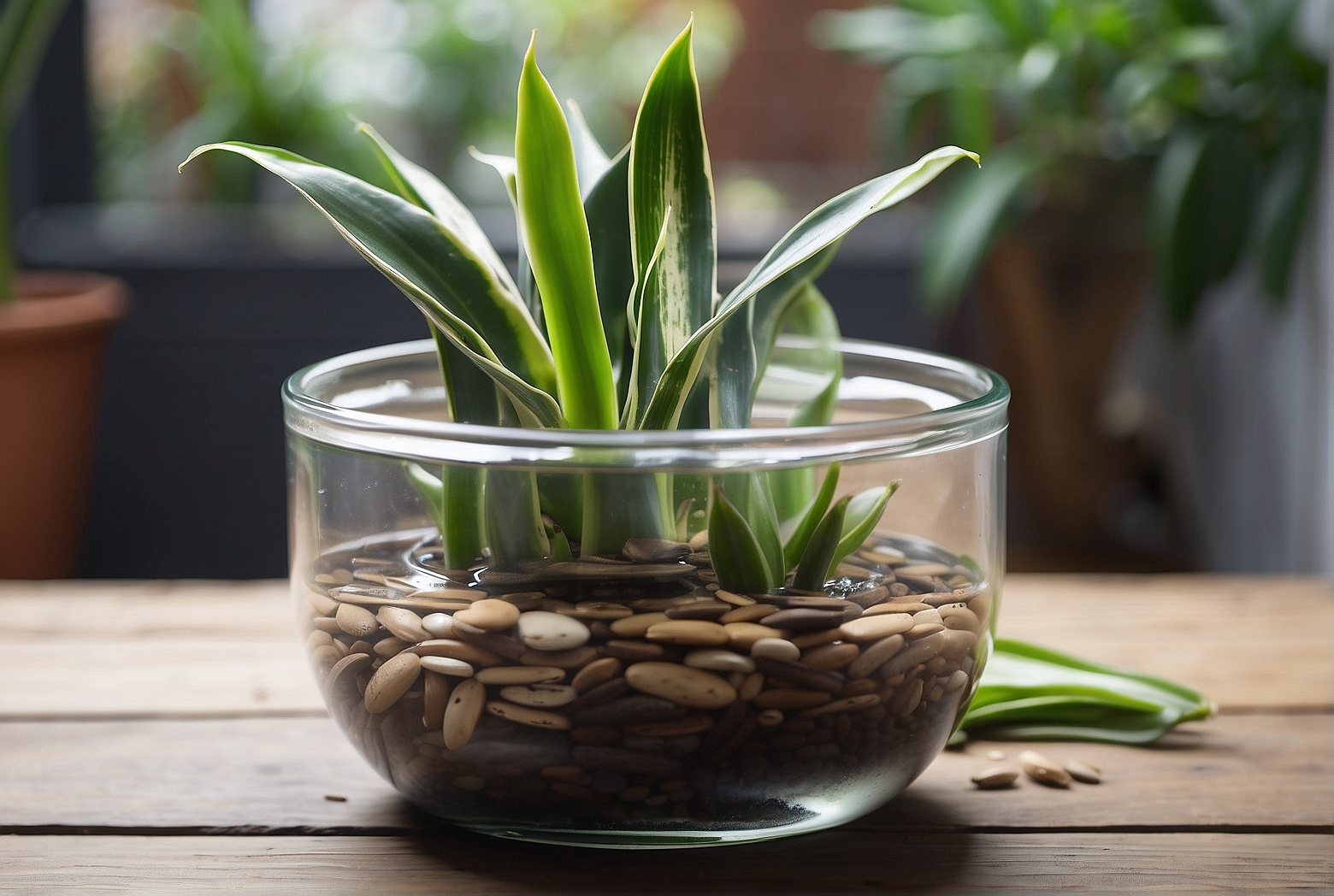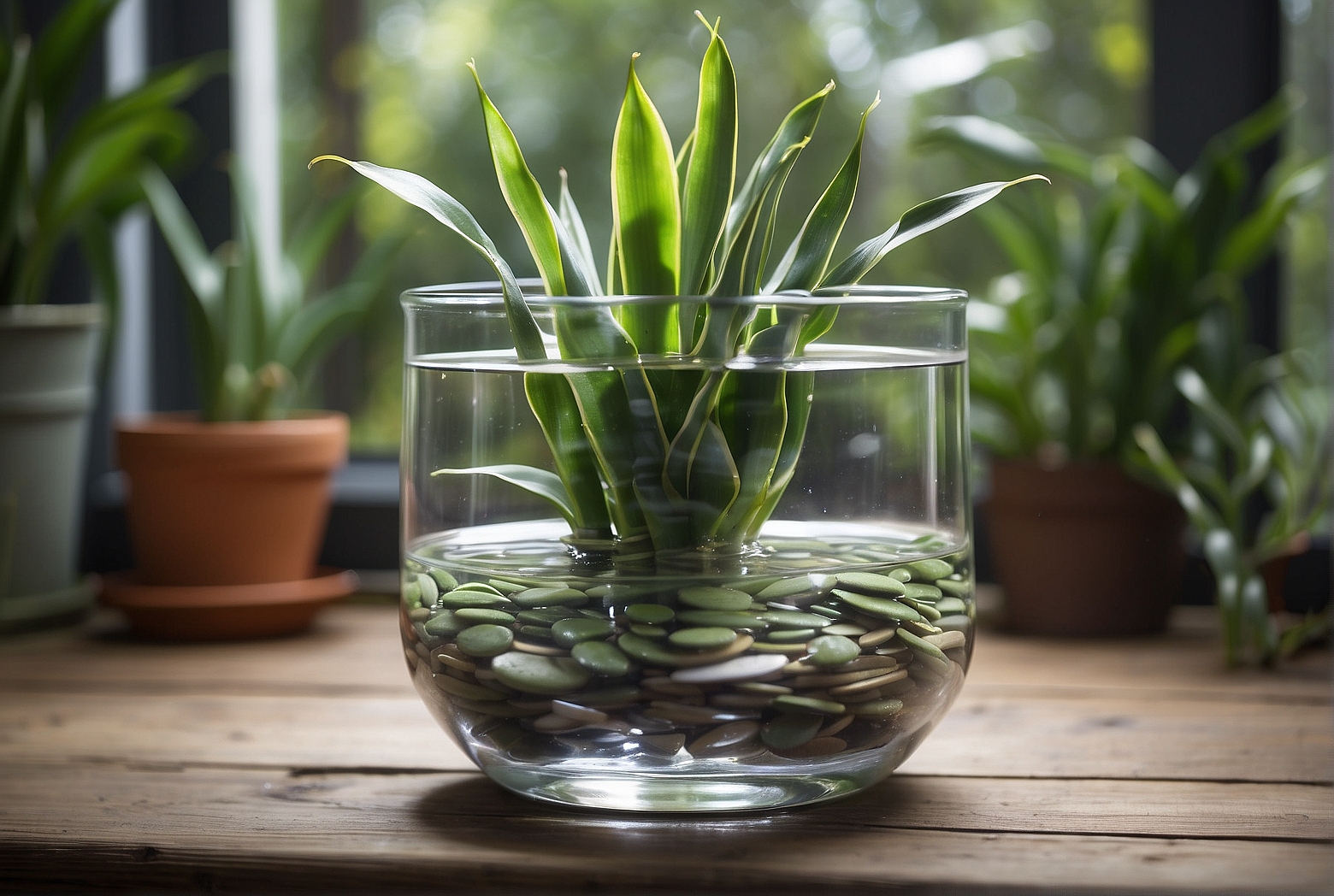Last Updated on April 14, 2024 by Tony Manhart
If you’ve ever wanted to expand your collection of snake plants or help a friend grow their own, you’ve come to the right place. In this complete guide on how to propagate snake plant in water, you’ll learn all the essential steps to successfully reproduce these beautiful, low-maintenance plants. Whether you’re a seasoned plant parent or just starting your green thumb journey, this article will provide you with the knowledge and confidence to propagate snake plants with ease. So, grab your gardening tools and prepare to embark on a rewarding propagating adventure!
Choosing the Right Snake Plant
When it comes to propagating snake plants, it’s important to start with a healthy mother plant. Look for a plant that has no signs of disease or pests, and has vibrant, green leaves. A healthy mother plant will ensure that the cuttings you take will have a greater chance of successfully rooting and growing into new plants.
Another thing to consider is the variety of snake plant you have. Different varieties have slightly different care requirements, so it’s essential to choose the right one for your specific needs. Some popular varieties include the Sansevieria trifasciata and Sansevieria cylindrica. Research the varieties available and choose the one that suits your preferences and growing conditions.
Preparing the Materials
Before you start propagating your snake plant, gather all the necessary materials. You will need clean shears or a knife for taking the cuttings, a suitable container for rooting the cuttings, and water for placing the cuttings in. It’s important to have everything ready beforehand to make the propagation process smooth and efficient.

Once you have gathered your materials, it’s essential to clean and sterilize them. This step helps prevent the spread of any potential diseases or pests to your snake plant cuttings. Wash the shears or knife with mild soap and water, and then wipe them down with a disinfectant solution. Similarly, clean the container thoroughly with warm, soapy water, and rinse it well. This way, you can ensure a healthy start for your propagated snake plants.
Taking Cuttings from the Mother Plant
To propagate snake plants in water, you will need to take leaf cuttings from the mother plant. Look for mature, healthy leaves that are at least six inches long. These leaves will have a better chance of successfully rooting and growing into new plants. Using clean shears or a knife, cut the selected leaves at the base, making sure to have an adequate length for rooting.
Once you have taken the leaf cuttings, you can further divide them into smaller sections. Cut the leaves into several sections, making sure each segment has at least one inch in length. These sections will be the ones that you’ll place in water for rooting.
Rooting the Cuttings in Water
After preparing the cuttings, it’s time to root them in water. Select a suitable container that is spacious enough to accommodate the cuttings. Fill the container with enough water to cover the bottom portion of the cuttings, ensuring that the top portion remains above the water level.

Place the cuttings in the water, making sure that the sections you cut have their bases submerged in the water. This will encourage rooting from the base of the cuttings. Make sure there is enough space between the cuttings to allow adequate airflow. Position the container in a location with indirect light, as this will provide the optimal conditions for rooting.
Positioning and Caring for the Cuttings
Choose a suitable location for your cuttings that receives indirect light. Direct sunlight can be too harsh for the delicate young plants. The area should have consistent temperatures and avoid drafts or extreme temperature fluctuations.
As your cuttings root in water, be sure to monitor the water level. It’s crucial to keep the base of the cuttings submerged in water to encourage root growth. Check the container regularly and add water as needed to maintain the proper level.
Over time, you may notice signs of rooting, such as small white roots emerging from the base of the cuttings. This is a positive development and an indication that your cuttings are successfully rooting. Be patient, as it can take several weeks for roots to fully form.
To ensure a healthy environment for your cuttings, change the water regularly. Empty the container, and refill it with fresh, clean water every two to three days. This prevents the growth of bacteria or fungi and keeps the rooting process smooth.
Transplanting the Rooted Cuttings
Once your cuttings have successfully rooted in water, it’s time to transplant them into a suitable potting mix. Prepare a well-draining potting mix that consists of a combination of peat moss, perlite, and a small amount of succulent soil. This mix will provide the necessary nutrients and drainage for your snake plants’ growth.
Choose an appropriate pot for transplantation. Make sure it has drainage holes to prevent waterlogging, which can cause root rot. The pot should be slightly larger than the root system of your cuttings, providing enough room for growth.
Gently remove the cuttings from the water, being careful not to damage the delicate roots. Shake off excess water and place the cuttings into the prepared potting mix, making sure they are securely seated. Gently press the soil around the base of the cuttings to provide stability.
Providing Optimal Growing Conditions
Snake plants thrive in bright, indirect sunlight. Find a location where your newly potted cuttings can receive ample light without direct exposure to harsh rays. If you’re growing them indoors, placing them near a north or east-facing window is a good option. Alternatively, provide them with artificial grow lights if natural light is limited.
Maintain a suitable temperature and humidity level for your snake plants. They prefer temperatures between 60 to 85°F (15 to 29°C) and moderate humidity levels. Avoid placing them in areas with drafts or extreme temperature fluctuations, as this can stress the plants.
Water your newly potted cuttings appropriately. Allow the soil to dry out partially between waterings, as snake plants are susceptible to root rot when overwatered. Stick your finger about an inch into the soil, and if it feels dry, it’s time to water. Pour water evenly over the soil until it’s moist but not waterlogged.
Caring for the Newly Propagated Snake Plants
Once your cuttings have become established plants, establish a watering routine to maintain their health. Generally, snake plants prefer to dry out between waterings. Water them thoroughly, allowing the excess water to drain out of the pot’s bottom. Empty any excess water from the saucer or tray beneath the pot, as stagnant water can lead to root rot.
Fertilize your snake plants every two to three months during their active growing season, typically from spring to fall. Choose a balanced, water-soluble fertilizer specifically formulated for houseplants. Follow the instructions provided on the fertilizer packaging for application rates and frequency.
To keep your snake plants looking their best, occasional pruning may be necessary. Remove any yellowing or browning leaves by cutting them as close to the base as possible. This encourages new growth and maintains the overall appearance of the plant. Additionally, dust the leaves periodically to help them photosynthesize more efficiently.
Common Issues and Troubleshooting
Despite their resilience, snake plants can face a few common issues. Identifying these issues early on can help you address them promptly and ensure the health of your plants.
Overwatering is a common problem with snake plants. Signs of overwatering include yellowing or browning leaves, mushy stems, and an unpleasant odor. To fix this issue, adjust your watering routine, allowing the soil to dry partially between waterings. Also, make sure your pots have proper drainage to prevent water from sitting in the soil.
If you notice signs of root rot, such as a foul smell or dark, mushy roots, take immediate action. Remove the affected parts of the plant and repot it in fresh, well-draining soil. Adjust your watering schedule and avoid overwatering in the future to prevent root rot from recurring.
Snake plants can occasionally suffer from pest infestations, including mealybugs and spider mites. These tiny insects can damage the leaves and affect the overall health of the plant. To address pest infestations, use an appropriate insecticidal soap or neem oil to treat the affected areas. Regularly inspect your plants for any signs of pests and take action as soon as you notice them.
Troubleshooting
If you encounter specific problems with your snake plants, here are some troubleshooting tips to help you identify and address them.
Yellowing or browning leaves can indicate overwatering, underwatering, or exposure to extreme temperatures. Adjust your watering routine, ensuring the soil is neither too dry nor waterlogged. Keep your plants away from drafts or areas with extreme temperature fluctuations.
Stunted growth may indicate inadequate light or insufficient nutrients. Check the amount of light your snake plants are receiving and adjust accordingly. If necessary, consider providing supplemental artificial lighting. If the growth continues to be stunted, try fertilizing your plants with a balanced, water-soluble fertilizer according to the instructions.
Leaf discoloration can be caused by various factors, including nutrient deficiencies, pests, or diseases. Evaluate your plant’s overall health, including its watering and fertilizing routine. Treat any pest or disease issues promptly, and ensure your plant is receiving adequate nutrients through proper fertilization.
With proper care and attention, propagating snake plants in water can be a rewarding and enjoyable experience. By following these steps and troubleshooting tips, you can successfully propagate and care for your snake plants, adding beauty and greenery to your home or garden.
Tony Manhart is a passionate gardener who has been tending to gardens for over 20 years. He takes pride in creating beautiful outdoor spaces with plants, trees, and shrubs that can thrive in any environment. He loves to share his knowledge with others and has taught classes on gardening basics and advanced techniques. He is committed to sustainability, using natural and organic methods to create and maintain gardens. He also works with local organizations to create green spaces for communities. When he’s not gardening, Tony enjoys hiking, reading, and spending time with his family.


